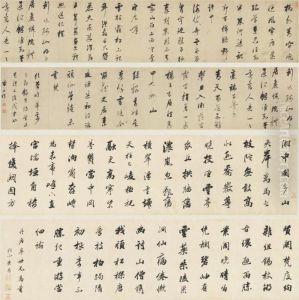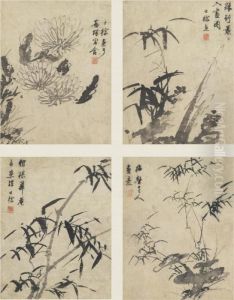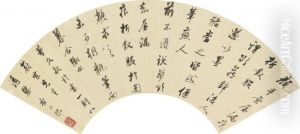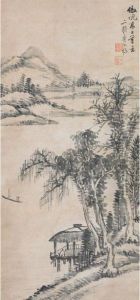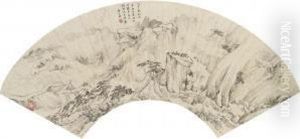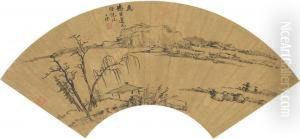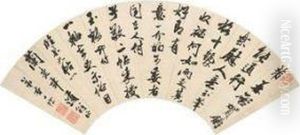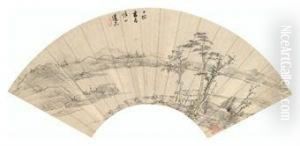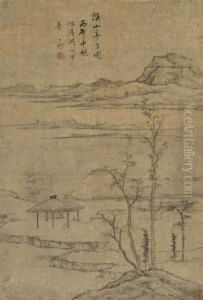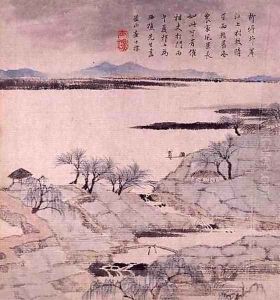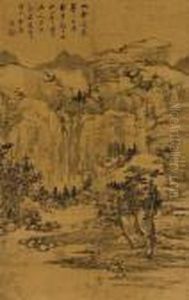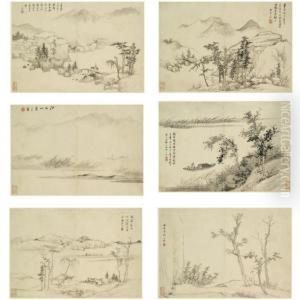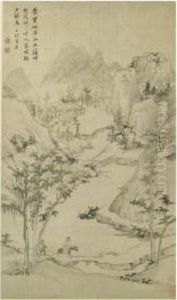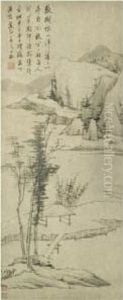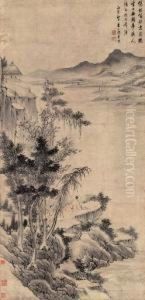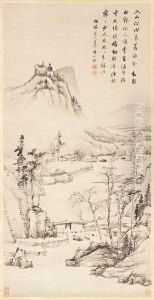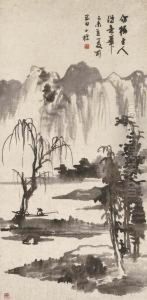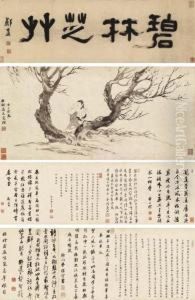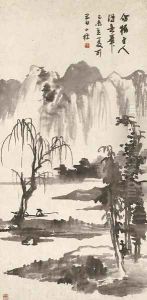Zha Shibiao Paintings
Zha Shibiao, also known by his courtesy name Yuanbian and his art name Aitang, was a Chinese painter, calligrapher, and poet during the late Ming and early Qing dynasties. He was born into a scholarly family in Anhui Province, and he showed an early talent for both painting and calligraphy. Zha was particularly known for his landscape paintings, which often reflected a sense of solitude and a retreat from the political turmoil of his time.
His artistic style was influenced by earlier masters such as Dong Qichang, and he is associated with the 'Anhui School' of painting, which emphasized bold brushwork and the use of ink washes to create a sense of depth and atmosphere. Zha's landscapes are characterized by their lofty and steep mountains, rendered with strong, angular brushstrokes and an effective use of blank space, known as 'liubai', to suggest mist and cloud.
During the chaotic period at the end of the Ming dynasty and the beginning of the Qing dynasty, Zha, like many literati of his day, faced the dilemma of whether to serve the new regime or to remain loyal to the Ming. Zha chose to withdraw from public life, a decision that was reflected in the reclusive and introspective nature of his art.
Zha Shibiao's calligraphy was also highly regarded, particularly in the semi-cursive (xingshu) and cursive (caoshu) scripts. His poetry, often inscribed alongside his paintings, further complements the emotional and philosophical depth of his work.
Today, Zha Shibiao is remembered as one of the major figures in the history of Chinese art, and his works are held in numerous prestigious collections, including the Palace Museum in Beijing and the National Palace Museum in Taipei. His artistic legacy continues to be studied and appreciated for its profound expression of the literati spirit and its mastery of traditional Chinese aesthetic principles.


